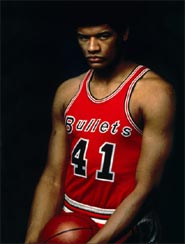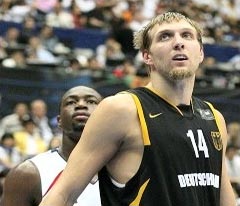The NBA draft is a career breaker or maker for many people involved. For some GMs and scouts it will spell the end of a career after selecting players that under perform. For others, it will catapult them to genius status when bringing on board underrated players. Regardless of this, many NBA personnel still practice foolish trends that are high risk high reward moves. Over the course of the next couple of days we will explore these trends – The Seven Deadly Sins of the NBA Draft.
Sin #1: "He plays like..."
Fill in the blank. Just take any name that coincides with that player's position and one skill that is similar. That’s pretty much how comparisons are made. It’s a dangerous practice dating back to the earliest years of the internet and has been going on in newspapers across America since college basketball started. Comparisons were originally done to help shape the reader's image of the player. If there was a center dominating the post, writers would say, “This player's rebounding reminds me of Wilt Chamberlain”, leading the reader to automatically recall visions of Chamberlain and thus sensationalizing the story. Nowadays it’s used as a prediction or projection of what the player should play like in the NBA, but from my discussions with players young and old, it’s one that has it’s drawbacks. Would you feel comfortable if you were a 6-foot-6 point guard and were projected as the next Magic? At 19 years old it would probably be a tremendous confidence booster while at the same time a pressure to live up to the praise of the best point guard to ever play the game. But how may of these projections turn out to be wrong?
Take this year for example. Kevin Love has been compared to everyone from Larry Bird to Wes Unseld. Are you kidding me?
 |
|
Wes Unseld |
NBA teams would be wise to use comparisons for a model in regards to playing style, not talent. Randy White was another. Coming out of the 1989 NBA Draft the Dallas Mavericks selected him with visions of the next Karl Malone. He hailed from the same college with the same physical playing style, so how could he not be the second coming of the Mailman? In the end, White struggled a great deal and was out of the league after 5 years. So much for comparisons.
Sin #2: "I want a clone of ..."
Every year there's someone that exceeds the expectations and becomes a franchise player. This player usually has a unique skill or doesn't physically fit the norm. In 1998 Dirk Nowitzki destroyed the Hoop Summit against some of our nation's finest. This young German forward had a devastating face-up game and a solid first step to take defenders off the dribble. He changed the perception of how 6-10 players with perimeter skills are viewed by NBA GMs. Some thought Dallas was getting a solid player and most compared him to Detlef Schrempf. This was one of the rare times when a comparison was not only met but exceeded the expectations.
 |
|
Dwayne Wade & Dirk Nowitzki |
Now it's the Dwyane Wade model that's caught on. Wade was viewed as an undersized combo guard, and while there was no doubting his physical skills, there were questions. Nowadays those same questions that dogged Wade help others get the benefit of the doubt. What NBA teams need to keep in mind is that following trends isn't the best practice. But with that said, there will always be exceptions to the rule.
At 6-6, Barkley was a freak of nature that dominated the power forward position. Undersized Byron Houston quickly caused GMs to abandon the idea of trying to draft a Barkley clone. And while the jury is still out on Andrea Bargnani, he may have finally put the Nowitzki model on endangered lists.
